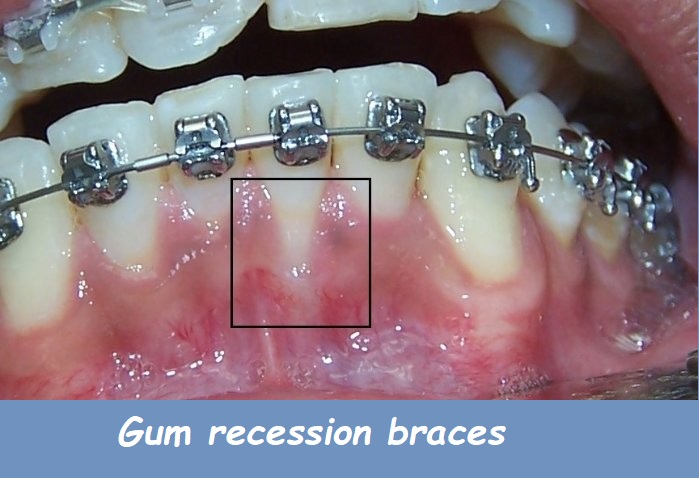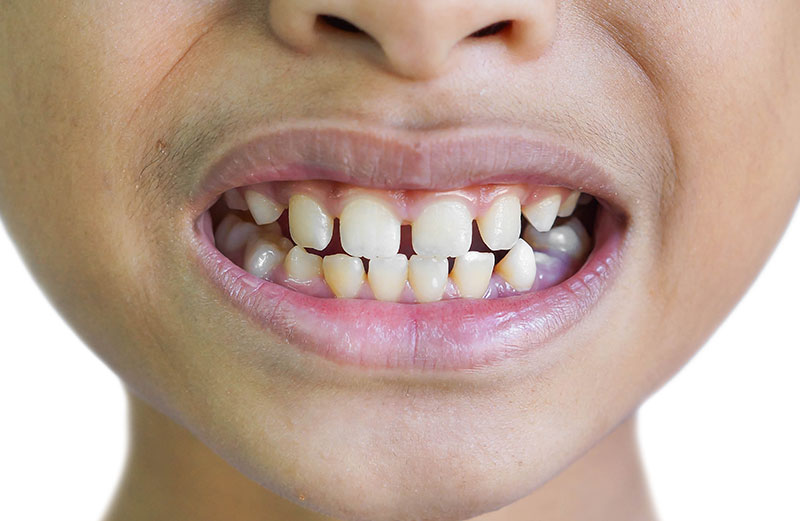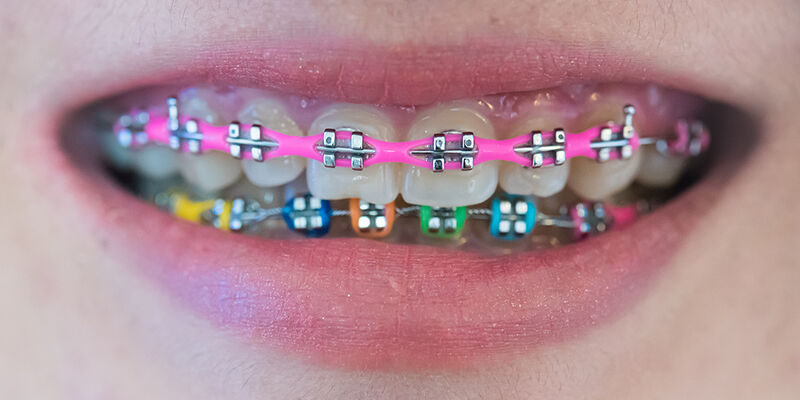Gum recession braces

Gum Recession and Braces: Understanding the Connection and How to Protect Your Oral Health.
Gum recession is a common dental issue characterized by the loss of gum tissue, exposing the roots of the teeth and leading to increased sensitivity, potential tooth decay, and aesthetic concerns. For individuals undergoing orthodontic treatment with braces, the risk of gum recession can be a significant concern. This comprehensive guide explores the relationship between gum recession and braces, the factors contributing to this condition, and how to prevent and manage gum recession during and after orthodontic treatment.
Understanding Gum Recession
Before delving into the connection between gum recession and braces, it’s important to understand what gum recession is and why it occurs.
- What Is Gum Recession?
- Gum recession occurs when the gum tissue surrounding the teeth pulls back or wears away, exposing more of the tooth or the tooth’s root. This condition can lead to increased sensitivity, a higher risk of tooth decay, and changes in the appearance of the smile.
- The gums play a crucial role in protecting the teeth and underlying bone structure. When the gums recede, they leave the teeth vulnerable to damage and infection.
- Causes of Gum Recession:
- Periodontal Disease: The most common cause of gum recession is periodontal disease, an infection of the gums that destroys the tissue and supporting bone.
- Aggressive Brushing: Brushing the teeth too hard or using a toothbrush with stiff bristles can wear down the gum tissue, leading to recession.
- Genetics: Some individuals are more prone to gum recession due to genetic factors. If gum recession runs in your family, you may be at a higher risk.
- Poor Oral Hygiene: Inadequate oral hygiene can lead to plaque and tartar build-up, which can contribute to gum disease and recession.
- Tobacco Use: Smoking or using other forms of tobacco can contribute to gum disease and recession.
- Teeth Grinding: Bruxism, or teeth grinding, can exert excessive pressure on the teeth and gums, leading to recession.
- Hormonal Changes: Hormonal changes in women, such as during pregnancy or menopause, can make the gums more vulnerable to recession.
The Relationship Between Gum Recession and Braces
While braces are primarily used to correct misaligned teeth and improve oral health, they can also contribute to gum recession if not managed properly. Understanding the factors that link gum recession and braces is essential for preventing this condition during orthodontic treatment.
- Orthodontic Forces and Gum Tissue:
- Braces work by applying continuous pressure to the teeth, gradually shifting them into their desired positions. While this process is effective for correcting misalignments, the forces exerted by braces can sometimes strain the gum tissue.
- If the teeth are moved too quickly or if excessive force is applied, it can cause the gums to pull away from the teeth, leading to recession. This is why orthodontists carefully monitor the progress of treatment to ensure that the movement is gradual and controlled.
- Oral Hygiene Challenges:
- Wearing braces can make it more difficult to maintain proper oral hygiene, as the brackets and wires create additional surfaces for plaque and food particles to accumulate. If plaque is not effectively removed, it can lead to gum inflammation (gingivitis) and eventually gum recession.
- Patients with braces must take extra care to clean around the orthodontic appliances to prevent gum disease, which is a major contributor to recession.
- Pre-Existing Gum Conditions:
- Individuals who already have mild gum recession or periodontal issues before getting braces may be at a higher risk of experiencing worsening gum recession during orthodontic treatment.
- In such cases, the orthodontist may recommend additional precautions or treatments to protect the gums during the alignment process.
- Tooth Movement and Bone Support:
- The success of orthodontic treatment relies on the movement of teeth within the jawbone. However, if the bone supporting the teeth is thin or weakened (a condition sometimes associated with gum recession), it can increase the risk of further recession as the teeth are moved.
- Orthodontists may use imaging techniques to assess the bone structure and gum health before starting treatment, allowing them to tailor the approach to minimize the risk of recession.
Preventing Gum Recession with Braces
Preventing gum recession with braces requires a proactive approach that includes careful planning, diligent oral hygiene, and regular monitoring by the orthodontist. Here are key strategies to help protect your gums during orthodontic treatment:
- Choose the Right Orthodontist:
- Selecting an experienced orthodontist who understands the potential risks of gum recession and how to prevent them is crucial. Look for an orthodontist who takes a personalized approach to treatment, considering your unique gum and bone structure.
- Discuss any concerns about gum health with your orthodontist before beginning treatment. They can assess your risk factors and develop a plan to protect your gums throughout the process.
- Maintain Excellent Oral Hygiene:
- Brushing and flossing are even more important when you have braces. Use a soft-bristled toothbrush and brush gently around the brackets and wires to remove plaque without irritating the gums.
- Consider using an orthodontic toothbrush or an electric toothbrush with a small head designed for cleaning around braces. Interdental brushes and floss threaders can also help you reach areas that are difficult to clean with regular floss.
- Regular Dental Check-Ups:
- In addition to orthodontic visits, continue to see your regular dentist for check-ups and cleanings. Your dentist can monitor your gum health and provide professional cleanings to prevent plaque build-up.
- If you notice any signs of gum recession, such as increased sensitivity or a change in the appearance of your gums, inform your orthodontist and dentist immediately so they can address the issue promptly.
- Use Antibacterial Mouthwash:
- An antibacterial mouthwash can help reduce the risk of gum disease by killing bacteria that contribute to plaque build-up. Ask your orthodontist or dentist to recommend a mouthwash that is safe to use with braces.
- Be sure to rinse thoroughly, but avoid using mouthwashes that contain alcohol, as they can dry out the mouth and potentially irritate the gums.
- Avoid Aggressive Brushing:
- While it’s important to keep your teeth and braces clean, brushing too hard can damage the gums and contribute to recession. Use gentle, circular motions when brushing, and avoid scrubbing back and forth.
- Replace your toothbrush regularly, especially if the bristles become frayed, as worn-out bristles can be harsh on the gums.
- Monitor Your Diet:
- Certain foods can contribute to gum irritation and recession, particularly those that are hard, sticky, or sugary. Avoid foods that are difficult to clean off your braces or that can cause damage to the orthodontic appliances.
- A balanced diet rich in vitamins and minerals, particularly vitamin C and calcium, supports overall gum health and can help prevent recession.
- Consider Orthodontic Alternatives:
- For individuals at high risk of gum recession, alternatives to traditional braces, such as clear aligners (e.g., Invisalign), may be considered. Clear aligners are removable, making it easier to maintain oral hygiene and reducing the risk of gum irritation.
- Discuss the pros and cons of different orthodontic options with your orthodontist to determine the best approach for your specific needs.
Managing Gum Recession After Braces
If gum recession occurs during or after orthodontic treatment, it’s important to address it promptly to prevent further complications. Here are some strategies for managing gum recession after braces:
- Gum Grafting Surgery:
- Gum grafting is a surgical procedure used to restore lost gum tissue. During the procedure, tissue is taken from another part of the mouth (often the roof of the mouth) or from a donor source and grafted onto the affected area.
- This procedure not only improves the appearance of the gums but also helps protect the exposed tooth roots from decay and sensitivity.
- Scaling and Root Planing:
- If gum recession is accompanied by periodontal disease, scaling and root planing may be necessary to remove plaque and tartar from below the gum line. This deep cleaning procedure can help reduce gum inflammation and stop the progression of recession.
- Regular periodontal maintenance may be required to keep the gums healthy after treatment.
- Using Desensitizing Toothpaste:
- If gum recession has caused tooth sensitivity, using a desensitizing toothpaste can help reduce discomfort. These toothpastes contain compounds that block the pathways to the nerves, reducing sensitivity.
- Your dentist can recommend a specific brand or formula that is effective for your needs.
- Orthodontic Retainers:
- After braces are removed, wearing a retainer is essential to maintain the results of your orthodontic treatment. However, it’s important to ensure that the retainer fits properly and does not put undue pressure on the gums.
- If you experience any discomfort or notice changes in your gum health while wearing a retainer, consult your orthodontist for adjustments.
- Regular Gum Monitoring:
- Even after orthodontic treatment is complete, it’s important to continue monitoring your gum health. Regular dental check-ups will allow your dentist to detect any signs of gum recession early and take appropriate action.
- If you have a history of gum recession, your dentist may recommend more frequent visits to ensure that your gums remain healthy.
Conclusion
The connection between gum recession and braces is a complex one, with several factors influencing the risk of developing this condition during orthodontic treatment. While braces are effective for correcting dental misalignments and improving oral health, they can also contribute to gum recession if not properly managed.
Preventing gum recession while wearing braces requires a combination of careful treatment planning, diligent oral hygiene, and regular monitoring by both your orthodontist and dentist. By choosing the right orthodontic approach, maintaining a thorough cleaning routine, and addressing any early signs of gum recession, you can protect your gum health and achieve the best possible outcome from your orthodontic treatment.
For those who experience gum recession during or after braces, prompt intervention is key to preventing further damage and restoring a healthy smile. With the right care and attention, it’s possible to manage gum recession effectively and enjoy the benefits of a beautifully aligned, healthy set of teeth.








